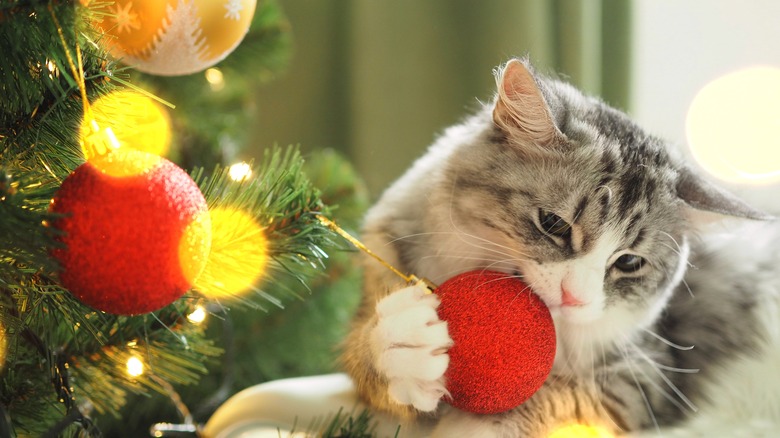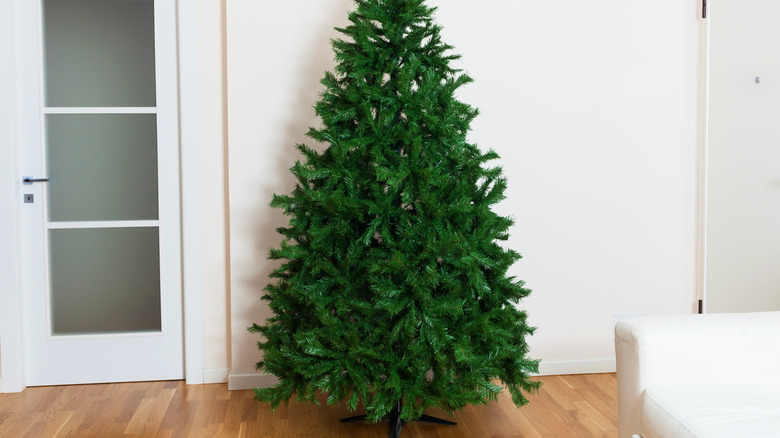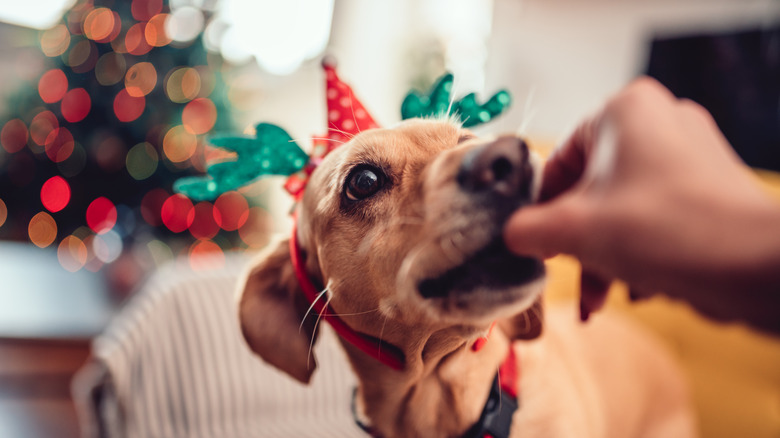How To Stop Your Pets From Eating Your Christmas Decorations
Christmas is holly and jolly — until Spot or Patches tears down your decorations, and it's even worse if they get sick or injured because of it. But just because you have curious or rambunctious animals doesn't mean you have to tone down your holiday spirit — you just have to make it pet-friendly. How to do this will depend on your pet's determination and personality, as well as the kind of decorations you use. You can prevent many mishaps by planning ahead or by keeping harmful items out of your furry friend's reach. You can even deter your pets with physical barriers or scents they don't like.
Knowing the kind of trouble your pup or kitty will get into before you start decorating is important. If this is your first year with a new furry friend, it may take some trial and error to figure out how they'll let you decorate your house. Unless you want to keep them out of the living room all December long, you'll need pet-friendly options. Knowing how to keep your pets safe around the Christmas tree and decorations can help you avoid disaster in your home and a potentially large vet bill.
Prevent mishaps with careful preparation
Real trees are often attractive snacks to cats, but dogs may occasionally chew on them, too. Unfortunately, tree needles can hurt your pet. According to Banfield Pet Hospital, injury could range from mouth irritation to more severe issues like diarrhea and vomiting. Artificial trees may be safer since they won't drop needles like the real thing, but they could still cause injury by obstructing your pet's intestines. Even a real tree's water bowl can harm your pets, so keep them covered with a tree collar or skirt. Artificial trees don't have a water receptacle, which is another reason they may be the better option. Many families have traditions of decorating trees with food like popcorn, cranberries, or dried oranges. These may be attractive to your pets, so forgo the realism and look for artificial versions of these items. Other plants like poinsettias, holly, and mistletoe could be harmful, too, so plan on using artificial plants, or keeping the real ones well out of reach.
You can acclimate your pet to holiday decorations by leaving the bare essentials out before you decorate. Leave naked trees and garlands out for about a week before you start decorating them with ornaments and lights. If you have décor with lights or moving parts, leave them out but turned off to get the pets adjusted before you turn them on and make them look enticing.
Keep hazards out of reach and use distractions
The best way to keep pets from eating your Christmas tree and decorations is to make them physically inaccessible. Tape cables to the floor, put lights toward the middle of the tree to make them harder to reach, and don't decorate the tree's lower branches. Not decorating the bottom part of your tree may seem silly at first, but fellow pet owners will understand, and with a little decorating finesse, you might be able to make it look natural. You can also use pet gates around your tree to keep them away, then remove the gates on Christmas Eve or Christmas Day when it's time to have your guests over. If presents attract your furry pals, only set them out when it's time to open them. Sure, it may not be as fun that way, but it'll keep Fido and Whiskers safe.
You may also be able to keep your pets safe with a simple distraction to keep them busy. Try cat towers and scratch posts for curious cats, and puzzles and treat toys for dogs. If you have family and friends over, they may be willing to help you distract your pets — with so much cuteness around, you may not even have to ask!


